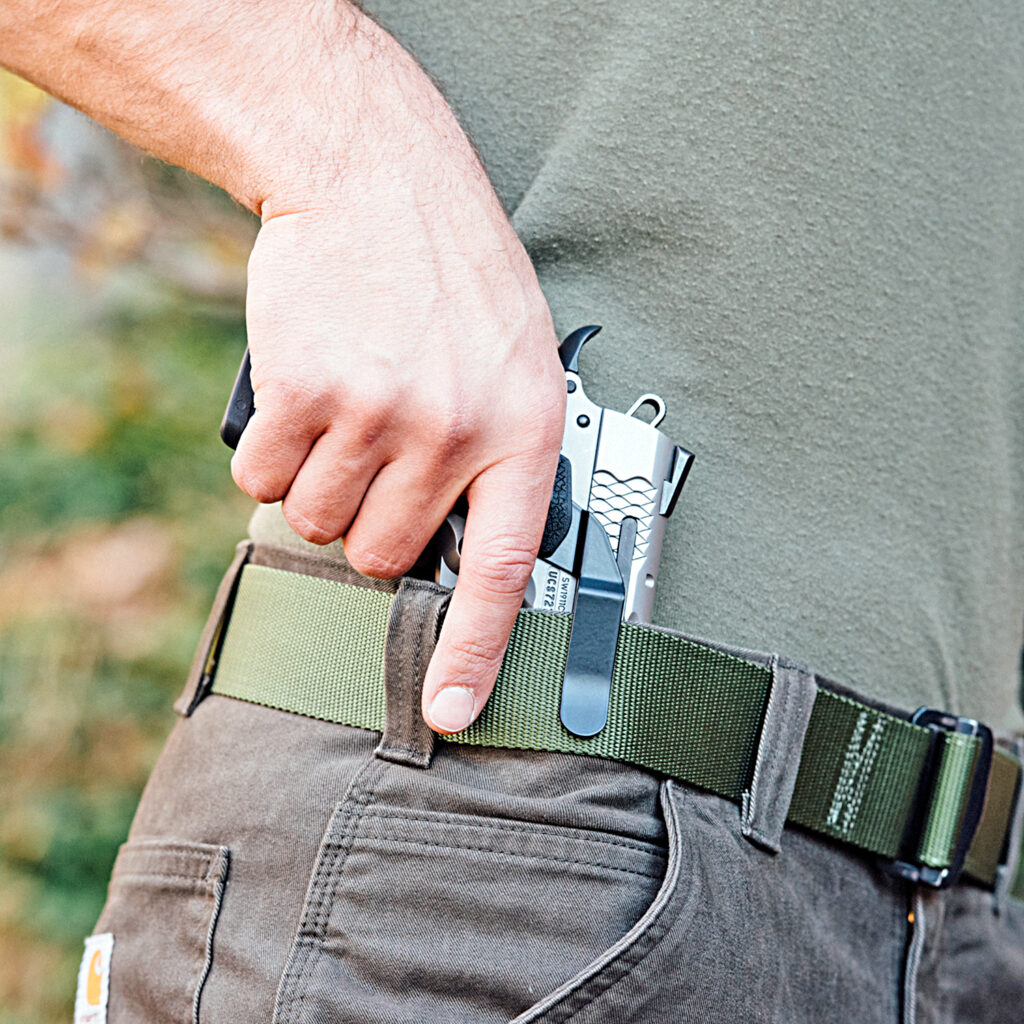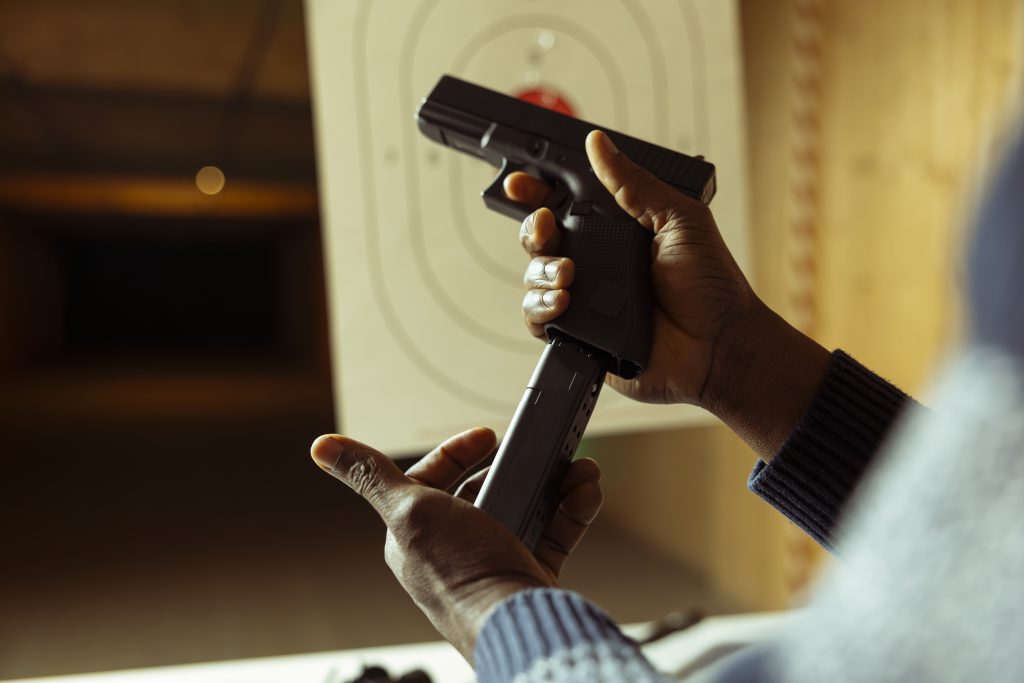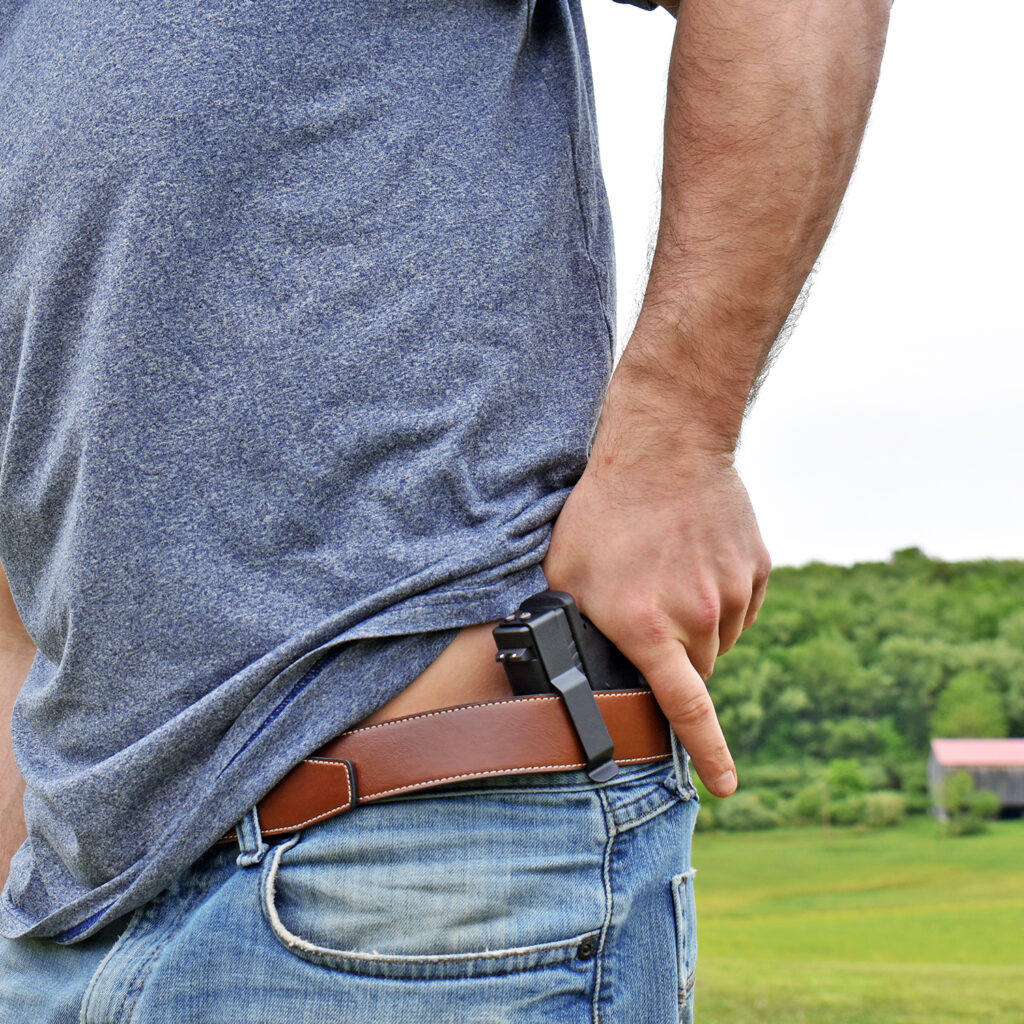For effective concealed carry techniques, preparation is key. That means training for scenarios that may not go as planned. While most firearm owners invest time in refining their dominant-hand skills, many overlook the value of developing their support hand. Understanding how to shoot with your non-dominant hand and integrating off-hand shooting drills into your routine ensures that you are ready to respond effectively, regardless of which hand is available.
The Importance of Off-Hand Training
No one can predict how a self-defense situation will unfold. An injury, physical obstruction, or environmental factor may render your dominant hand unavailable. In these high-stress moments, your ability to transition seamlessly to your support hand can significantly impact the outcome.
Training your non-dominant hand enhances your adaptability and situational readiness. It also builds confidence, allowing you to remain composed under pressure. Incorporating off-hand concealed carry practice into your overall training regimen equips you to act with purpose and control when it matters most.
How to Build Proficiency with Your Support Hand
Before heading to the range (or using dry fire practice at home), it’s important to begin with a solid foundation. Developing comfort and consistency with your support hand requires deliberate and focused effort.
Evaluate Your Starting Point
Start by assessing how your non-dominant hand feels when holding and manipulating your firearm. You may notice differences in grip strength, trigger control, and sight alignment. Acknowledging these challenges early helps shape your practice plan.
Spend time familiarizing yourself with the mechanics. Practice establishing a proper grip, aligning your sights, and pulling the trigger smoothly. Keep safety top of mind and always follow proper protocols.
Begin with Dry Fire Practice
Dry fire practice is a critical first step. It offers a safe and cost-effective method to build familiarity and reinforce muscle memory. Use your off-hand to practice drawing your firearm, acquiring your target, and smoothly pulling the trigger without live ammunition.
Establish a consistent dry fire routine. A few sessions each week can significantly accelerate progress. Over time, you will notice improved control, steadier aim, and increased confidence.
Practice Effective Off-Hand Shooting Drills
Once a foundation has been established through dry fire, it is time to move into live-fire exercises. The following off-hand shooting drills help strengthen your performance and simulate real-world conditions.
One-Handed Shooting Behind Cover
Set up a barricade and practice engaging a target using only your support hand while maintaining cover. This drill reinforces firearm control and target acquisition in constrained environments. Begin at close range and gradually increase the difficulty.
Focus on smooth trigger control and proper sight alignment. The goal is to maintain accuracy while working within realistic limitations.
Support-to-Primary Hand Transitions
While the emphasis is on your off-hand, it is also vital to practice transitioning between hands. Start by drawing with your support hand, engaging a target, then safely transferring the firearm to your dominant hand and continuing the drill.
This helps develop fluid motion between hands and ensures you are not locked into a single method of engagement.
Reloading with Your Non-Dominant Hand
One of the more challenging aspects of support-hand training is reloading. Practice magazine changes using your off-hand only, simulating a scenario where your dominant hand is compromised.
Break down the steps into manageable segments. Use dummy rounds or inert training tools to master the motions before progressing to live rounds. Repetition is key to building speed and efficiency.
Off-Hand Concealed Carry Practice in Realistic Scenarios
Training in static conditions is only part of the equation. Self-defense situations often involve movement, stress, and unpredictability. Your training should reflect that reality.
Drawing from Concealment Using Your Off-Hand
Drawing from concealment with your support hand presents unique challenges. Whether you carry on your hip, appendix, or elsewhere, practice drawing your firearm with your off-hand in a controlled environment.
Evaluate your holster position and adjust as needed. A secure and accessible concealed carry setup is essential for success. This is where the right equipment makes a significant difference.
Movement, Pressure, and Situational Drills
Incorporate movement into your practice. Step laterally, pivot, or retreat while drawing and firing with your off-hand. Add verbal commands, time constraints, or simulated distractions to increase complexity.
These drills improve decision-making, boost situational awareness, and help you remain composed under pressure.
Overcoming Challenges During Off-Hand Training
It’s normal to encounter obstacles during support-hand training. Identifying these barriers and working through them builds both physical and mental resilience.
Developing Muscle Memory Takes Time
Do not expect immediate mastery of off-hand concealed carry techniques. Your muscles and neural pathways need time to adjust. Be patient and persistent. Focus on consistency, not perfection.
Structured training and repetition help cement new habits. Keep a journal or log of your progress to track improvements and identify areas for refinement.
Building Confidence
Mental hesitation can be as limiting as physical discomfort. Trust in your training and remind yourself that competency with your off-hand is achievable.
Visualization techniques and scenario planning can strengthen your mindset and reduce anxiety during live practice or real-world application.
Gear Selection and the Role of Equipment in Off-Hand Concealed Carry Practice
Your success in off-hand concealed carry practice is directly influenced by the gear you use. The right equipment makes training smoother and more effective.
Clipdraw’s gun clips offer a minimal, secure carry solution that allows for quick, intuitive access with either hand. Our clips feature a slim design that eliminates the bulk of traditional holsters while ensuring your firearm remains safely in place. Whether you are drawing with your dominant hand or your support hand, Clipdraw’s gun clips help eliminate unnecessary obstacles and keep your firearm ready when you need it most.
Having the right gear makes all the difference. Our selection of gun clips are designed with simplicity, accessibility, and effectiveness in mind.
Train Smart and Carry Confidently
Training your off-hand for concealed carry defense is not just an advanced technique. It is a critical part of being a responsible and prepared firearm owner. Whether you are at the range, practicing dry fire at home, or running scenario drills, consistent support-hand training builds confidence, control, and readiness.
Practicing how to use your non-dominant hand will take your concealed carry skills to a new level.
If you are serious about being prepared in every situation, make sure your gear is just as ready as you are. Clipdraw offers a secure carry solution that ensures smooth, reliable access no matter which hand you need to draw with.
Upgrade your concealed carry setup with Clipdraw’s gun clips and accessories.


